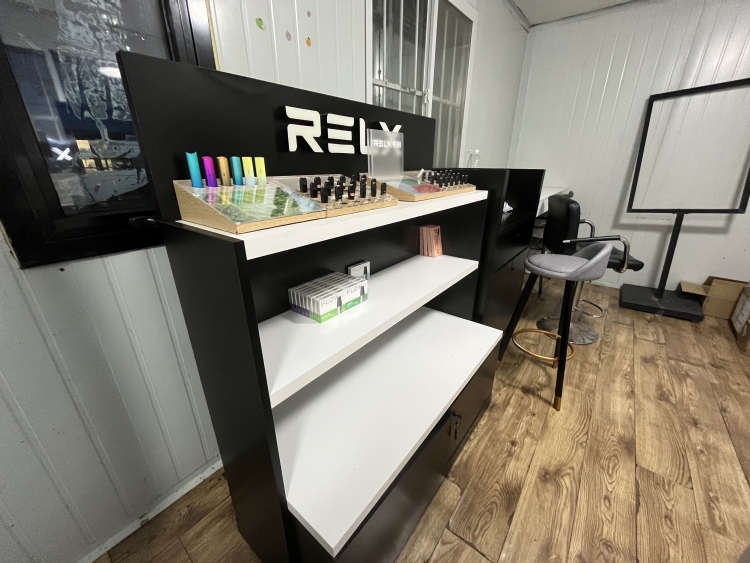On the evening of September 29, Xixi(alias) sits idly at a Relx vape store, as she tends the shop for the last day. Few customers stop by, but only to turn away after they found out all the tasteful flavors are already sold out.

Xixi was informed a day earlier by her boss that the store would close on September 30. She was not surprised, as she had dreaded this day since April this year when China started pushing for stricter regulations on nicotine vapes. Being an accounting major, Xixi knew full well the shop wasn’t making much money after May 1, when the “Electronic Cigarette Management Measures” were announced and only limited flavors could be sold.
According to the measures, no flavoring would be allowed for e-cigarettes. Relx, one of the best-selling vape brands in China, pushed for several tobacco-mixed flavors - such as tobacco mixed with blueberry or tobacco mixed with citrus.

Like fusion gourmets, tobacco mixed flavored vapes are an acquired taste — it takes some getting used to for both vapers and cigarette smokers. Obviously, tobacco mixed flavors are not as appealing to young vapers who are already used to the sweet, refreshing taste of fruity vapes.
However, even these mixed flavored vapes - which are difficult to adjust to - are being discontinued, as the regulation, which is enforced stricter than the industry had hoped, prohibits the adding of any sort of sweeteners.
“I would be pleasantly surprised even if 2 out 10 vapers can convert from fruit flavor to tobacco ones,” said Xixi, who adds that the new flavors would only have 2% of nicotine in them, compared with the previous 3%. In addition, the price per pack would possibly rise, making it less cost-effective.
Xixi’s shop is one of many vape stores in China which are closing by October 1 and having a sale to clear their inventory. A heavy fine would be imposed if the shops continue to sell fruit-flavored vapes after October 1, so their remaining inventory has to be sent back to the factories or be sold to private resellers.
Vape stores are closing as quietly and rapidly as they did when they first opened and swarmed the first and second-tier cities in China in the past five years. According to the “Mandatory National Standards for Electronic Cigarettes” which will be effective starting October 1, establishments that engage in the production or operation of electronic cigarettes, or vapes, should obtain a tobacco license. In addition, they are not allowed to publicly advertise vapes, advertise vapes to minors in any form, host any gatherings for the purpose of promoting vapes, or advertise vapes in the form of public service announcements.
For vape and vape juice manufacturers, they should abide by a series of rules such as adding child lock to the vaping devices, and limiting the concentration of nicotine to no higher than 20mg/g, and the total amount of nicotine be no higher than 200mg.
On September 29, the day the new regulation was made public, Smoore, the world leading Shenzhen-based vaping manufacturer, saw its shares slump to a new low of 9.2 HKD, and eventually closed at 9.41 HKD, with a 5.24% drop. The drop means Smoore’s valuation decreased by 470 billion HKD, from 529.1 billion HKD at its climax to 57.3 billion HKD.
RELX, the biggest vape company in China, also reached its new low, and closed at 1.03 USD with a 2.83% drop, which puts the company’s valuation at about 1.6 billion dollars. Compared with its 35 USD price level and nearly 54.4 billion valuation when RELX was just listed, the company suffered an approximately 52.8 billion USD loss.
But that doesn’t necessarily mean the end of the vaping industry in China. As of September this year, at least 90 products by 30 vape brands in China have passed the evaluation mandated by the new regulation, and will be qualified to sell after October 1. These include 34 vaping devices and 56 vape juices by brands such as RELX, YOOZ, MOTI, Boulder, LAMI, vvild, VTV, VAZO, etc.
In addition, China is a big exporter of e-cigarettes or vapes. In 2021, China's total exports of electronic cigarettes reached 138.3 billion yuan, an increase of 180% YoY. The products are mainly sold to the United States (53%), Europe (22%), and Russia 9%. In 2022, the export amount of electronic cigarettes is expected to exceed 180 billion yuan, according to China Times quoting an industry report.
Image: Zijing Fu/PingWest
